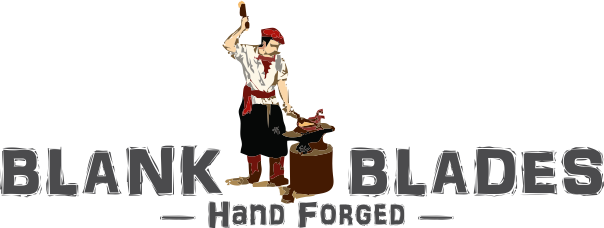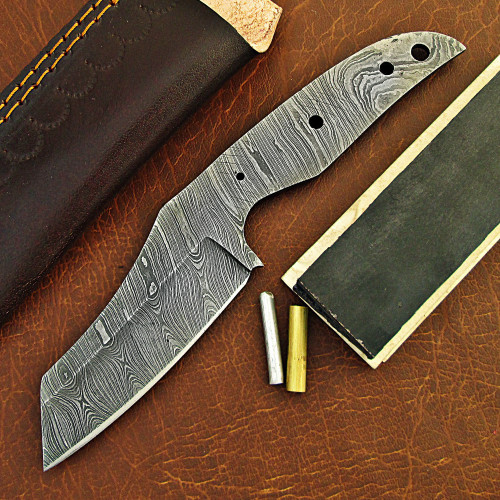Knife Making Kit DIY includes Damascus Blade Blank, Pins, Handle Scales, Leather Sheath as Knife Making Supplies NB104
- Product Code: NB104
- Availability: In Stock
- $64.99
$49.99
- Ex Tax: $49.99
Damascus steel is crafted using ancient techniques by forging 2 different steels 1095 and 15N20 resulting in a stunning pattern with over 512 layers and hardness 56-60 HRC. Tough, sharp and long lasting as it is beautiful. Each blade is tempered and edge is fully sharpened. See photos for measurements.
Process and characteristics of Damascus steel:
Damascus Steel, a type of steel known for its distinctive patterning and historical significance. Damascus steel has a rich history dating back centuries and is revered for its beauty, durability, and sharpness.
Here's a breakdown of the key points one should mention:
- Materials: Damascus steel is traditionally made by layering two types of steel, typically high-carbon steel (like 1095) and low-carbon steel (like 15N20). These layers are stacked and forged together to create a billet with multiple layers.
- Layering: The process of stacking and folding the layers creates the distinctive patterns seen in Damascus steel. This can result in intricate swirls, waves, or other patterns depending on the techniques used by the bladesmith.
- Forging: The billet is forged-welded, twisted, drilled, flattened, and forge-welded again to further refine the steel and develop the desired pattern.
- Hardness: The final hardness of the blade typically falls within the range of 58-60 HRC (Rockwell Hardness Scale), which ensures a balance between durability and sharpness.
- Blade Making: Once the billet is prepared, it is used to make the knife. The knife is profiled, ground, heat-treated, and finished using various techniques such as etching and bluing to enhance the pattern.
- Measurements: Damascus steel knives come in various shapes and sizes, and the measurements can vary depending on the specific design. It's common for catalogs to provide detailed measurements and images to give customers an accurate representation of the product they will receive.
Overall, Damascus steel blades are not only functional tools but also pieces of art with a rich cultural and historical significance. Each blade is unique due to the handmade nature of the forging process and the distinct patterns that emerge during production.
NOTE: Each Damascus steel pattern is unique in the world so you will receive the product as shown in the photos but the blade patterns and handle material may vary.



